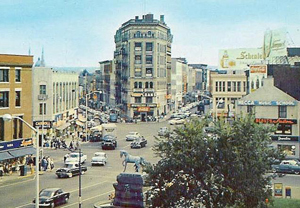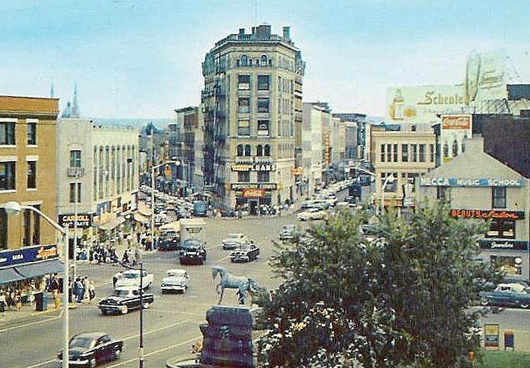
WATERBURY, Conn. (AP) – The city is quietly bringing modern art to its public spaces, from a sculpture in the courtyard of City Hall to a mural on an empty downtown building.
An informal group guiding the city from a past of monuments and memorials to a future of floating metallic origami has done it behind the scenes, at almost no cost to taxpayers.
“Public art might not be the thing that saves the city, but it has a vital place at the table because it can change how people think about a place,” said urban planner Sam Gold, a group member.
The group, which hails from diverse communities of the local arts, government and civic groups, just unveiled a metal sculpture by local artist Brian Walters in a rear City Hall courtyard.
The group and Walters will make an even bigger splash next spring, when they unveil his large, fire truck-red origami sculpture in front of Silas Bronson Library.
“It’s made out of metal, which looks to the city’s history as the metal manufacturing capital of the country, but the color and form speak to the future,” Walters said. “It’s going to really pop.”
Even the modern form of the piece references the city’s past, however, reminiscent of the monumental, movement-heavy metal sculptures of Roxbury sculptor Alexander Calder, many of whose works were welded in the Brass City.
Walters, a Bethel sculptor, first learned to weld steel at Kaynor Tech in an adult enrichment program. Now the 35-year-old Walters teaches the class and works as a substitute teacher there.
After getting the commission to create the sculpture for Silas Bronson, Walters decided to donate the untitled work that sits on a small pedestal in the rear courtyard at City Hall.
One of the committee members discovered Walters’s work at a bike sculpture event at the Waterbury on Wheels celebration on the City Green last year, and asked him to stay in touch.
When the library spot opened up, she invited him to submit a few models of what he could create for a prominent spot in front of a modern building on a history-drenched street.
“It was a perfect fit,” said city grants coordinator Kathleen McNamara, the group member who spotted Walters. “It will really engage the public.”
The committee evolved from a group of city boosters and art and architecture buffs that came together to raise money for both art and landscaping at the newly renovated City Hall.
The money to buy Walters’s library sculpture came from a mix of leftovers, including the City Hall landscaping efforts, and state-funded Cool Waters mosaic project on 90 South Main St.
Members range from Gold and McNamara to Frank Tavera, the director of the Palace Theater, to Bob Burns and Cathy Smith, the director and board president of the Mattatuck Museum.
They all have a fine arts background of some sort. Gold and McNamara, for example, both studied art history in college. And McNamara makes jewelry herself.
The group has been seeking the city’s official blessing while working behind the scenes, wanting the security and the funding potential of an officially sanctioned committee.
An official committee would draft rules spelling out how it will solicit, select, display, protect and fund the public art, McNamara said. It would also spell out how to retire the art, if necessary.
As an official group, it would have better standing with grant-giving organizations, like the state Department of Economic and Community Development, and artists, she said.
Mayor Neil M. O’Leary agrees Waterbury needs art, and that sometimes the city itself will have to kick in to buy it, but he is the first to say he doesn’t know anything about it.
“I don’t have a problem putting money into something that will elevate the city’s image,” O’Leary said. “Every major city I’ve ever been to has some kind of public art, some kind of culture.”
Last week, O’Leary agreed to convert the work group into an official city committee by the first of the year.
# # #
Copyright 2013 Associated Press. All rights reserved. This material may not be published, broadcast, rewritten, or redistributed.
ADDITIONAL IMAGE OF NOTE


